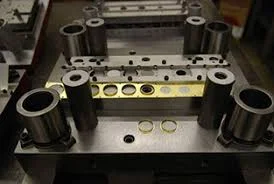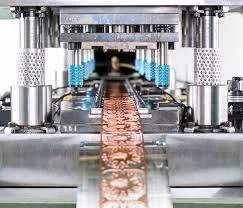Precision Sheet Metal Contract Manufacturing - Part II
Sheet metal is metal formed by an industrial process into thin, flat pieces. Sheet metal can be cut in various ways, from hand tools to very large powered shears. With the advances in technology, sheet metal cutting has turned to computers for precise cutting.
Punching and stamping are two of the most common machining processes in a typical modern precision sheet metal contract manufacturing facility.
We looked at punching process in previous blog. This blog deals with the stamping process.
Progressive Stamping and Progressive Dies
Stamping presses perform a variety of operations such as punching, blanking, deep-drawing, and bending, etc. Compared to punching which is used to obtain specific features of a part like adding a hole, stamping is used to perform on the entire work piece with multiple machining features.
In progressive stamping, the sheet metal stock is automatically fed into a long die/punch set with many stages. Then a progressive die is placed into a stamping press. As the press moves up, the top die moves with it, which allows the material to feed. When the press moves down, the die closes and performs the stamping operation. The sheet metal work piece is advanced very precisely along the stamping press as it moves from station to station. The alignment requirement is usually controlled within a few thousandths of an inch.
Multiple simple-shaped holes may be produced in one stage, but complex shapes and holes are created in multiple stages. The output of each successive station adds onto the work of the previous stations, resulting in a completed work piece.
The part is carried from station to station by the stock strip and is cut out of the strip in the final operation. In progressive die stamping, a steel strip is formed into a finished part in several operations.
Advantages of Progressive Stamping Process
Speed: This is reflected in both machine setup and in the run rate of parts produced. With just one proper set up hundreds of machining processes per minute can be completed.
Quality: As production-grade steel hard tools or dies are typically chosen in the application of progressive stamping, the tools/dies are able to withstand high-volume mass production. The dies are usually made of tool steel to withstand the high shock loading involved, retain the necessary sharp cutting edge, and resist the abrasive forces involved. The work quality is superb and the stamping output can achieve extreme high level of precision and tight tolerances.
Cost-Effectiveness: In terms of total cost of ownership, although initial tooling expenses are needed, progressive stamping yields the best value as the initial investment in the tool/die can be recuperated at mass production.



